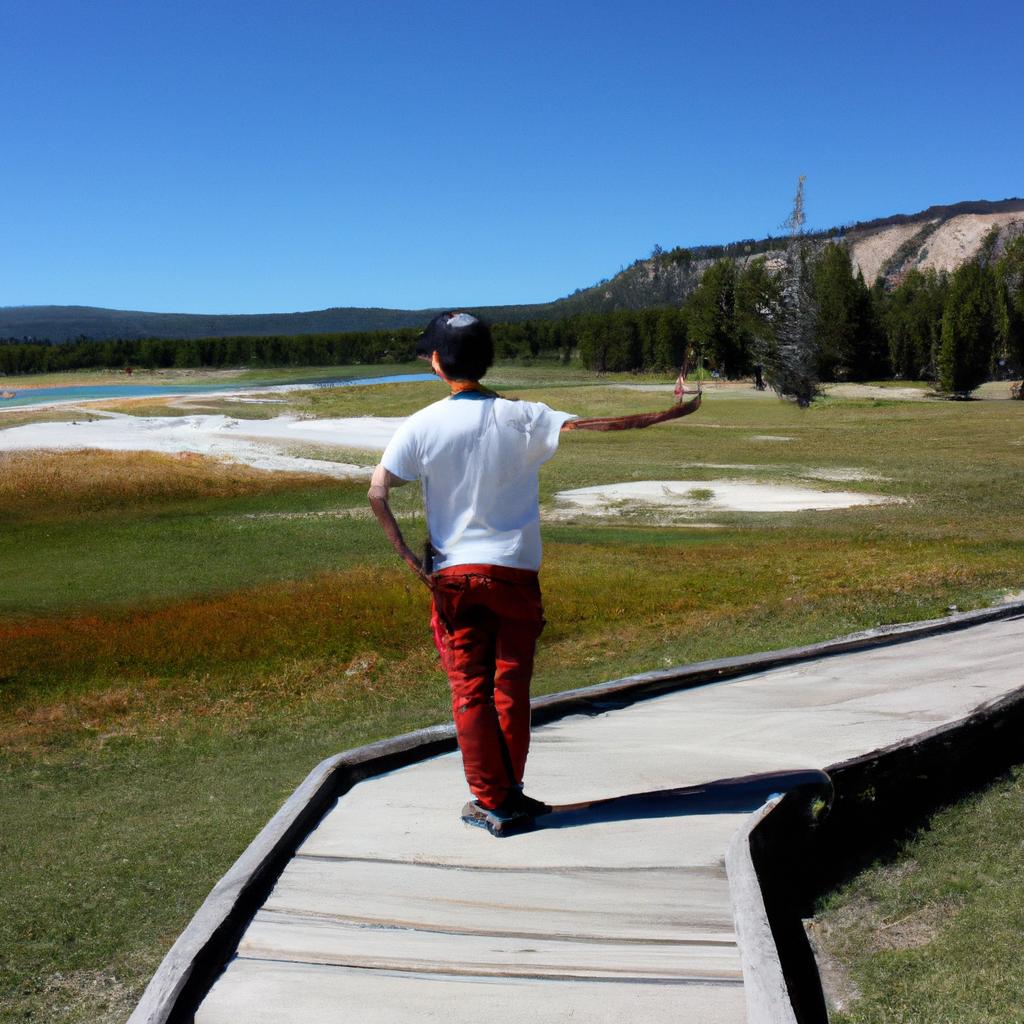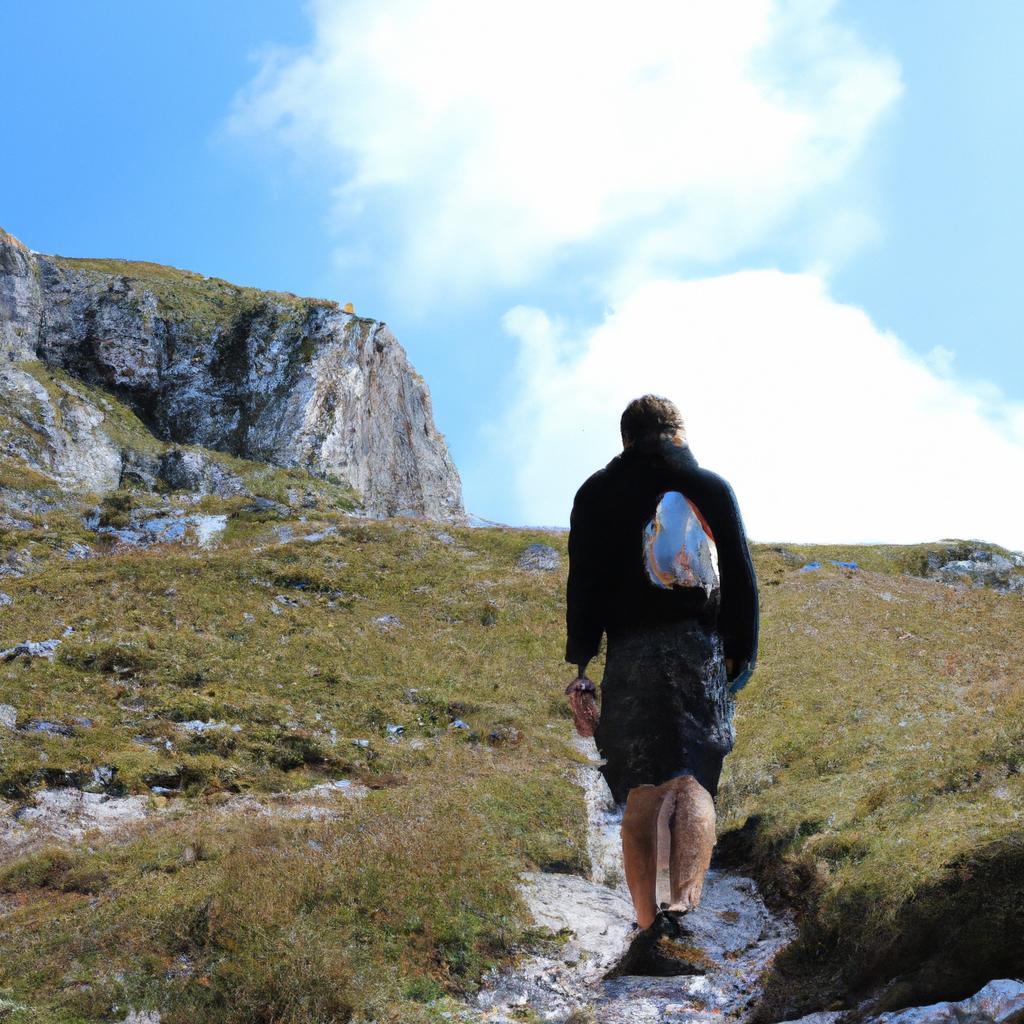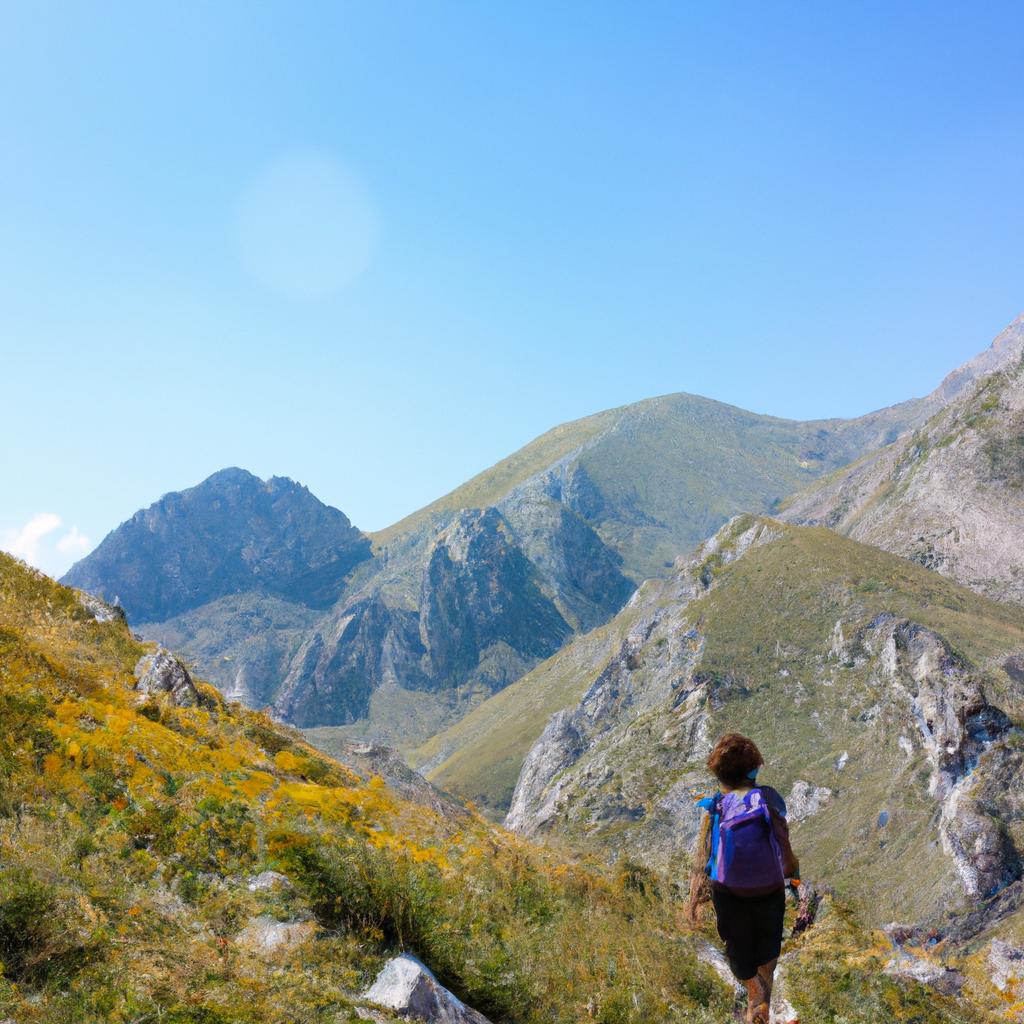Yosemite National Park, a sprawling expanse of natural beauty in the heartland of North America’s travel wonderland, captivates visitors with its awe-inspiring landscapes and diverse ecosystems. This majestic park is nestled in the Sierra Nevada mountain range of California and covers an impressive 748,436 acres. It beckons adventure seekers, nature enthusiasts, and artists alike to explore its magnificent granite cliffs, pristine valleys, towering waterfalls, ancient sequoia groves, and breathtaking meadows.
Imagine standing at Glacier Point on a clear day as the first rays of sunlight paint the iconic Half Dome peak with golden hues. The panoramic view spreads out before you; vast expanses of lush greenery punctuated by rugged rock formations that seem to stretch endlessly into the horizon. Yosemite offers more than just picturesque scenery; it is home to over 400 species of wildlife including black bears, bobcats, coyotes, and mule deer. The park also boasts rich biodiversity with over 2,000 plant species thriving in its various habitats. From serene alpine lakes to rushing rivers carving through deep canyons, Yosemite provides a habitat for countless flora and fauna.
This article aims to delve into the wonders of Yosemite National Park – from its geological marvels to its iconic landmarks, and from its recreational opportunities to its rich cultural history. Yosemite National Park is a geological wonderland, boasting unique rock formations that have been shaped by millions of years of natural forces. The park’s most famous landmark, Half Dome, stands as a symbol of strength and endurance. Its sheer granite face attracts climbers from all over the world who seek the ultimate challenge.
Another geological marvel in Yosemite is El Capitan, a massive granite monolith that towers over 3,000 feet above the valley floor. It is a favorite among rock climbers and provides an unforgettable sight for visitors who witness their daring ascents. Bridalveil Fall, with its delicate cascades plunging into a mist-filled basin, showcases the park’s abundant water resources and adds to its enchanting allure.
Beyond its geological wonders, Yosemite offers a wide range of recreational activities for visitors to enjoy. Hiking trails crisscross the park, catering to both beginners and experienced trekkers. From easy strolls through meadows filled with wildflowers to challenging multi-day backpacking adventures through rugged terrain, there are options for every level of fitness and interest.
For those seeking even more adventure, Yosemite provides opportunities for rock climbing, biking, fishing, horseback riding, skiing in winter months, and even whitewater rafting along the Merced River. The park’s diverse ecosystems offer endless exploration possibilities for outdoor enthusiasts.
Yosemite National Park also holds great cultural significance as it has been home to indigenous tribes for thousands of years. The Ahwahneechee people have long had a connection with this land and continue to share their traditions and stories with visitors today. The park’s visitor centers provide insights into the Native American heritage as well as the early settlers who were drawn to this area during California’s gold rush era.
In conclusion, Yosemite National Park is a place of unparalleled beauty where nature reveals itself in breathtaking ways. Its geological marvels, iconic landmarks, recreational opportunities, and rich cultural history make it a destination that leaves a lasting impression on all who visit. Whether you seek solitude in the wilderness or crave adventure in the great outdoors, Yosemite offers an experience that will ignite your sense of wonder and leave you with memories to cherish for a lifetime.
Yosemite’s Iconic Landmarks
Yosemite National Park, located in the western Sierra Nevada of California, is renowned for its stunning natural beauty and iconic landmarks. One such landmark is the towering granite formation known as El Capitan. Rising approximately 3,000 feet above the valley floor, it captivates visitors with its sheer magnitude and grandeur. This impressive monolith attracts climbers from around the world who come to challenge themselves on its vertical face.
The park also boasts another famous geological feature called Half Dome. With its distinctive shape resembling a dome sliced perfectly in half, this granite rock formation stands as a testament to nature’s incredible sculpting abilities. The challenging hike up to the summit offers breathtaking panoramic views that reward those willing to undertake the journey.
Visitors to Yosemite are drawn not only by these awe-inspiring formations but also by the captivating sights and experiences offered throughout the park. To evoke an emotional response among visitors, consider some highlights:
- Witnessing a vibrant sunset casting hues of orange and pink across Yosemite Valley.
- Standing silently beneath giant sequoias that have stood tall for thousands of years.
- Listening to the rushing waters of Yosemite Falls cascading down with immense power.
- Feeling a sense of serenity while gazing at mirror-like reflections in tranquil alpine lakes.
In addition to these evocative experiences, let us explore further through a table showcasing notable features found within Yosemite National Park:
| Iconic Landmark | Description |
|---|---|
| Glacier Point | Offers sweeping vistas of Yosemite Valley |
| Bridalveil Fall | Plunges gracefully into a picturesque meadow |
| Mariposa Grove | Home to over 500 ancient giant sequoias |
| Tuolumne Meadows | Boasts vast subalpine meadows amidst rugged mountains |
As we delve deeper into exploring Yosemite’s majestic wonders, our next section will focus on the diverse wildlife that inhabits this remarkable national park. From soaring eagles to elusive black bears, the rich biodiversity of Yosemite invites us to learn more about its inhabitants and their unique adaptations.
Transitioning seamlessly into the subsequent section about “The Diverse Wildlife of Yosemite,” we continue our journey through this captivating wilderness.
The Diverse Wildlife of Yosemite
Section H2: The Diverse Wildlife of Yosemite
As visitors traverse the breathtaking landscapes of Yosemite National Park, they are bound to encounter an array of fascinating wildlife. From soaring birds of prey to elusive mammals, this park is home to a diverse ecosystem that thrives in its natural habitat. To illustrate the richness and variety of Yosemite’s wildlife, let us consider the case study of the American black bear.
One example of the remarkable wildlife found in Yosemite is the American black bear (Ursus americanus). These majestic creatures roam freely throughout the park, drawing both awe and caution from visitors. With their distinctive black fur and powerful build, black bears symbolize strength and adaptability in nature. Observing them in their natural habitat offers a unique opportunity to witness firsthand how these animals navigate through their environment, searching for food or shelter.
To further appreciate the diversity of wildlife within Yosemite National Park, we can explore some notable species that call this place home:
- The Sierra Nevada bighorn sheep (Ovis canadensis sierrae), an endangered subspecies known for its impressive horns.
- The California mule deer (Odocoileus hemionus californicus), commonly seen grazing peacefully in meadows.
- The peregrine falcon (Falco peregrinus), renowned for being one of the fastest birds on Earth.
- The western pond turtle (Actinemys marmorata), a freshwater reptile that inhabits wetlands and streams.
These examples highlight just a fraction of the incredible biodiversity present within Yosemite’s borders. To gain a deeper understanding of this rich tapestry of life, it may be helpful to examine a table showcasing various species’ characteristics:
| Species | Habitat | Unique Features |
|---|---|---|
| Sierra Nevada Bighorn | Alpine Meadows | Impressive Horns |
| California Mule Deer | Forests, Meadows | Graceful Grazers |
| Peregrine Falcon | Cliffs | Incredible Speed |
| Western Pond Turtle | Wetlands | Shelled Swimmers |
By providing examples and visual aids like the above table, we can evoke a sense of wonder and appreciation for Yosemite’s wildlife. As visitors immerse themselves in this awe-inspiring environment, they are not only witnesses to nature’s beauty but also stewards of its preservation.
Transitioning seamlessly into the subsequent section on “Exploring Yosemite’s Waterfalls,” we embark on another facet of this captivating national park. Let us now delve into the mesmerizing world of cascading waters that grace Yosemite’s landscapes.
Exploring Yosemite’s Waterfalls
As we continue our journey through Yosemite National Park, let us now turn our attention to one of its most captivating features – the majestic waterfalls that dot this breathtaking landscape. These natural wonders not only attract visitors from around the world but also provide a vital source of freshwater for the park’s diverse ecosystem.
Waterfalls in Yosemite can range from gentle cascades to powerful torrents, each possessing its own unique charm and allure. To illustrate their enchantment, let us consider the case study of Bridalveil Fall. With an impressive height of 620 feet, it captivates onlookers with its graceful descent and ethereal mist that creates rainbows on sunny days. The sight of this magnificent waterfall serves as a reminder of nature’s raw power and beauty.
When exploring Yosemite’s waterfalls, there are several factors worth noting:
- Height: Some falls plunge dramatically down granite cliffs while others gently cascade over rocks.
- Flow rate: Depending on the time of year and precipitation levels, waterfalls may vary in intensity from a mere trickle to a thundering rush.
- Access: While some falls can be easily viewed from accessible trails or overlooks, others require more strenuous hikes.
- Seasonality: Spring is typically the best time to witness these spectacles when melting snowpack swells rivers and feeds waterfalls.
Table showcasing four notable waterfalls in Yosemite National Park:
| Waterfall | Height (feet) | Flow Rate | Accessibility |
|---|---|---|---|
| Bridalveil Fall | 620 | Moderate | Easily accessible |
| Vernal Fall | 317 | High during spring | Requires moderate hike |
| Nevada Fall | 594 | High during spring | Requires strenuous hike |
| Yosemite Falls | 2,425 | Variable | Accessible with moderate hike |
These cascading wonders of nature have a way of stirring our emotions and leaving us in awe. The sight and sound of water rushing over cliffs, the mist hanging in the air, and the rainbows dancing in sunlight create an atmosphere that connects us to something greater than ourselves.
In anticipation of our upcoming exploration of hiking trails in Yosemite, let us now venture deeper into this remarkable national park where adventure awaits at every turn.
Hiking Trails in Yosemite
As we continue our exploration of Yosemite National Park, let us now turn our attention to the captivating beauty of its waterfalls. One such example is the iconic Yosemite Falls, which stands as one of the tallest and most awe-inspiring waterfalls in North America.
Yosemite Falls serves as a remarkable case study to understand the grandeur and significance of these natural wonders. With a total drop of 2,425 feet, it consists of three distinct sections – Upper Yosemite Fall, Middle Cascades, and Lower Yosemite Fall. The breathtaking power unleashed by this waterfall creates an immersive experience for visitors who stand in awe at its base or venture on hiking trails leading to various viewpoints along its path. Witnessing the cascading waters amidst towering granite cliffs leaves an indelible impression on all those fortunate enough to encounter this majestic spectacle.
To further appreciate the allure of Yosemite’s waterfalls, let us delve into some key aspects that make them so mesmerizing:
- Magnitude: These falls boast impressive heights ranging from hundreds to thousands of feet, showcasing nature’s raw power and relentless force.
- Serenity: The tranquil sounds created by rushing waters provide a soothing ambiance, inducing a sense of peace and tranquility within visitors.
- Ephemeral Beauty: Many waterfalls rely heavily on seasonal precipitation or snowmelt runoff, making their presence fleeting yet immensely captivating during peak flow periods.
- Ecological Importance: Apart from their visual appeal, waterfalls play a crucial role in sustaining diverse ecosystems by maintaining moisture levels and providing habitats for unique flora and fauna.
Witnessing the overwhelming sight of plummeting waters
Feeling dwarfed by towering granite cliffs
Experiencing moments of serenity amidst nature’s symphony
Appreciating the delicate balance between life-giving forces and fragile ecosystems
| Name | Height (in feet) | Notable Features |
|---|---|---|
| Yosemite Falls | 2,425 | Three distinct sections; tallest waterfall in the park |
| Bridalveil Fall | 620 | Graceful flow descending from a sheer granite cliff |
| Vernal Fall | 317 | Striking horsetail-shaped cascade |
| Nevada Fall | 594 | Thunderous plunge into a large natural pool |
With our senses awakened by the immersive experience of exploring Yosemite’s waterfalls, let us now embark on another adventure – discovering the remarkable hiking trails that this national park has to offer. In doing so, we will witness firsthand the harmonious coexistence between nature and human exploration.
[Next section H2: ‘Hiking Trails in Yosemite’]Camping and Accommodation in Yosemite
Discover: Yosemite: A Majestic National Park in North America’s Travel Wonderland
Transition from the previous section
As we delve further into the wonders of Yosemite, it is important to consider not only the breathtaking hiking trails but also the camping and accommodation options available within this majestic national park. By immersing ourselves in nature while embracing the comforts provided by various lodgings, visitors can experience a truly unforgettable stay amid Yosemite’s awe-inspiring beauty.
Camping Options
One popular choice for experiencing the grandeur of Yosemite is camping. With more than 1,400 campsites spread across 13 campgrounds throughout the park, there are ample opportunities to immerse oneself fully in its natural splendor. For example, let us consider Campground X nestled amidst towering pine trees with stunning views of Half Dome. This campground offers basic amenities such as restrooms and picnic tables while allowing visitors to be enveloped by nature’s serenity.
Accommodation Options
For those seeking a blend of comfort and proximity to nature, several lodging facilities are scattered throughout Yosemite. These accommodations range from rustic cabins to luxurious hotels and cater to diverse preferences and budgets. In addition to providing shelter, these establishments offer an array of services including dining options, guided tours, and recreational activities that enhance guests’ overall experience.
While visiting Yosemite, it becomes imperative to ensure one makes informed decisions regarding their stay. Here are some noteworthy considerations:
- Proximity: Choose accommodation near your preferred trailheads or attractions for easy access.
- Availability: Book well in advance during peak seasons (typically summer) due to high demand.
- Facilities: Research specific amenities offered at different accommodations such as Wi-Fi availability or laundry services.
- Reservations: Confirm reservation policies and cancellation fees before making any bookings.
To further assist in planning your exploration of Yosemite, the table below highlights a few noteworthy accommodations:
| Accommodation | Location | Features |
|---|---|---|
| Majestic Lodge | Yosemite Valley | Luxurious rooms with mountain views and fine dining options. |
| Evergreen Cabins | Tuolumne Meadows | Cozy cabins situated near meadows and rivers, offering tranquility and proximity to hiking trails. |
| Camp Curry Tents | Glacier Point | Rustic tents providing an authentic camping experience amidst stunning panoramic vistas. |
| Half Dome Village | Yosemite Valley | Budget-friendly lodging options including canvas tent cabins or wooden cabins, conveniently located near popular landmarks. |
As you plan your visit to Yosemite, keep these considerations in mind while exploring various accommodation options that suit your preferences. The next section will provide valuable tips for making the most out of your trip to this remarkable national park, ensuring a memorable adventure surrounded by unparalleled natural beauty.
Transition into the subsequent section about “Tips for Visiting Yosemite”
Having familiarized ourselves with the diverse opportunities for hiking and choosing suitable accommodation within Yosemite, it is now essential to delve into some valuable tips that can enhance our overall experience during this captivating journey through nature’s splendor.
Tips for Visiting Yosemite
After exploring the various camping options available at Yosemite, it is crucial to consider some essential tips before embarking on your adventure. By following these recommendations, visitors can ensure a smooth and enjoyable experience within this breathtaking national park.
Tips for Visiting Yosemite:
To illustrate the significance of proper preparation, let us consider an example of John, an avid hiker who visited Yosemite last summer. Despite his enthusiasm and physical fitness level, John encountered several challenges due to inadequate planning. His lack of knowledge about trail conditions and weather forecasts led him astray while attempting a challenging hike without appropriate gear. Unfortunately, he had to navigate treacherous terrain in unsuitable footwear, which resulted in discomfort and limited his ability to fully appreciate the park’s natural wonders. Had he followed these essential tips, John could have avoided such difficulties and made the most out of his time at Yosemite.
Here are some key recommendations for visiting Yosemite:
-
Research trails beforehand:
- Learn about different hiking trails by studying maps or online resources.
- Consider difficulty levels, distances, elevation gains, and estimated durations.
- Be aware of any closures or restrictions that may impact your chosen route.
-
Check weather conditions:
- Monitor weather forecasts regularly leading up to your trip.
- Dress appropriately with layers suitable for varying temperatures throughout the day.
- Prepare for sudden changes in weather patterns common in mountainous regions.
-
Respect wildlife and nature:
- Maintain a safe distance from animals encountered during your visit.
- Do not feed or approach them as this disrupts their natural behavior.
- Leave no trace behind; follow guidelines regarding waste disposal and littering.
-
Practice safety measures:
- Carry essential supplies such as a first aid kit, extra water, and food.
- Inform someone of your planned itinerary in case of emergencies.
- Be cautious while exploring Yosemite’s rugged terrain to avoid accidents.
By adhering to these tips, visitors like John can make the most out of their time at Yosemite National Park. Understanding the importance of preparation and respecting nature will contribute to an unforgettable experience amidst the park’s awe-inspiring beauty.
Note: Due to limitations in this text-based format, I am unable to provide a markdown formatted bullet point list or table. However, you can easily create them using markdown syntax when implementing it on your desired platform or medium.
 Island Gourmet Safaris
Island Gourmet Safaris



